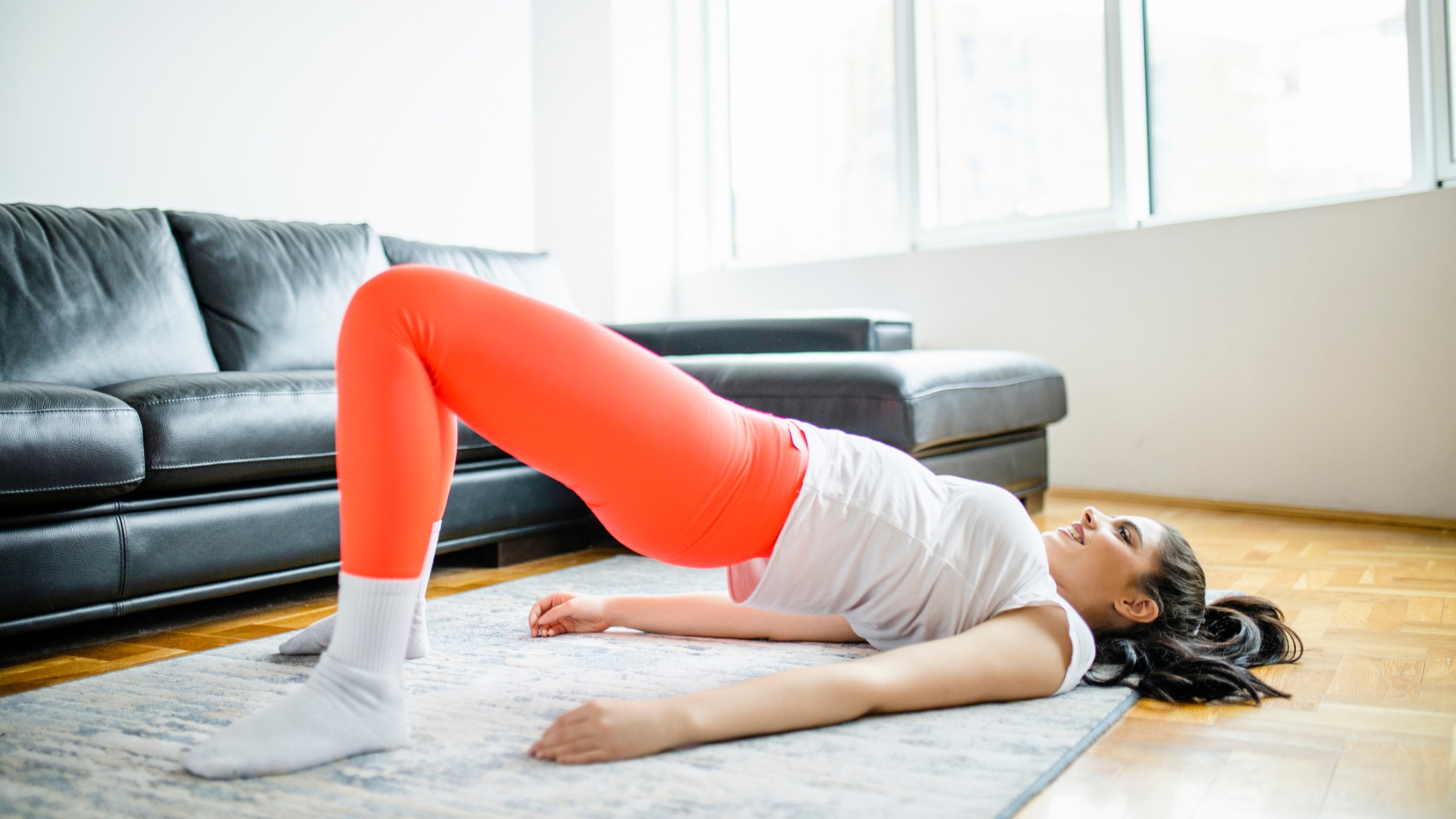
Ever get that nagging feeling when you run? No, not the one telling you that walking might be a more enjoyable option. I'm talking about that annoying, niggling pain in your lower back that plays havoc with your running form.
This is something that's been bothering me for longer than I can remember, but it came into sharp focus when training for a half marathon. It makes sense that stronger legs make for stronger runners, but could a stronger lower back boost your running ability and resilience too?
In a word: yes. The abs, obliques and lower-back muscles work together to create a strong core that plays a pivotal role in maintaining posture, protecting your spine and transferring power between your lower and upper body—and vice versa—whether you're walking, jogging or sprinting.
Neglecting to strengthen this area can leave you vulnerable to injury. Luckily, London-based trainer Obi Vincent has shared four simple moves to help you build a stronger lower back and improving your running performance no matter the distance.
Lower-back exercises for runners
Vincent says this four-move routine can be completed on its own or tagged onto the end of your regular workout or run. The best part? Each move can be performed using just your bodyweight, making it great for at-home sessions or outdoor workouts.
Get familiar with the moves, then complete three sets of each exercise for the specified number of repetitions, resting 30-60 seconds between each set. Use this workout once or twice per week, leaving at least a couple of days between sessions for muscle recovery.
1. Glute bridge
Sets: 3 Reps: 12-15
- Lie on your back with your knees bent and feet flat on the floor, hip-width apart.
- Press your lower back into the floor to activate your core.
- Lift your hips until your knees, hips and shoulders form a straight line.
- Lower to the start slowly, with control.
Vincent says: "This simple exercise targets the glutes and lower back, which are crucial to stabilizing the pelvis when running. This move should be the cornerstone of any running plan, helping to reduce the risk of common hip and knee injuries caused by miles on the road."
2. Good morning
Sets: 3 Reps: 10-12
- Stand with your feet hip-width apart, hands crossed over your chest.
- Engaging your glutes and core, hinge from your hips to lower your chest toward the floor, maintaining a flat back.
- Lower until your torso is almost parallel to the floor or as far as your hamstring mobility allows, then return to standing.
Vincent says: "Good mornings strengthen the lower back, while gently stretching the hamstrings. Combined, this helps maintain an upright posture, especially during longer runs when fatigue can compromise your form the most."
3. Hip thrust
Sets: 3 Reps: 10-12
- Rest your upper back on a bench (or a sofa or bed if you're at home), with your feet flat on the floor hip-width apart.
- Drive your hips up until your knees, hips and shoulders form a straight line, squeezing your glutes at the top.
- Lower to the start slowly, with control.
Vincent says: "Hip thrusts are formidable at building strength in your glutes, which is essential for strong hip extension and forward momentum when running, helping improve stride efficiency and reduce strain on your lower back and hamstrings."
4. Reverse plank
Sets: 3 Time: 30-40 sec
- Sit with your legs extended in front of you and your hands just behind your hips, fingers pointing outward.
- Lift your hips until your body forms a straight line from your head to your heels.
- Engage your core and squeeze your glutes to maintain this position, ensuring your hips don’t sag.
- Keep your head neutral or gently tilt it back to avoid straining your neck and breathe naturally.
Vincent says: "Reverse planks are a tremendous exercise for strengthening your entire posterior chain—the back, glutes and hamstrings. These will help improve all-round core stability and posture, reducing the pain on your lower back whether clocking your first or last mile on your run."







